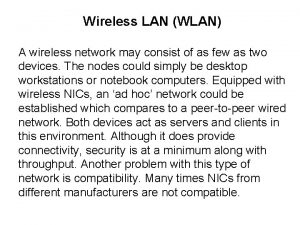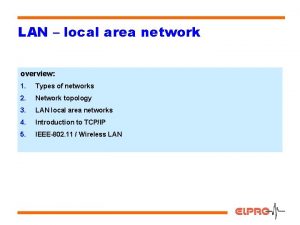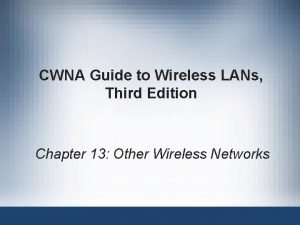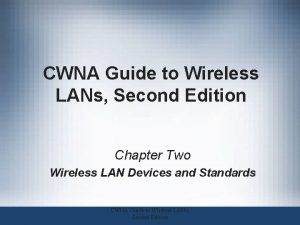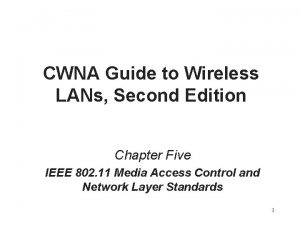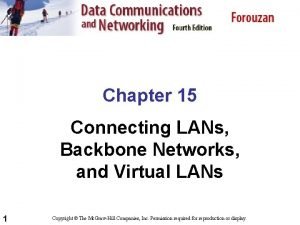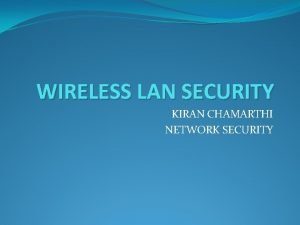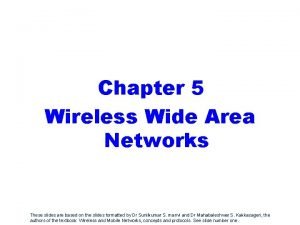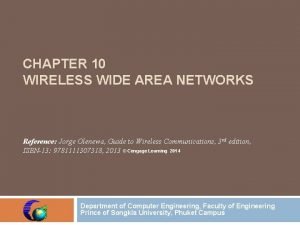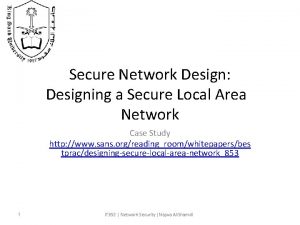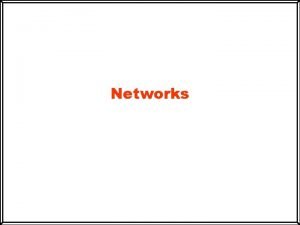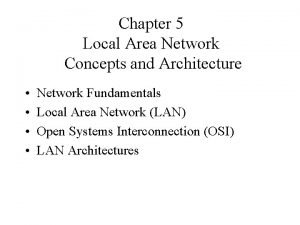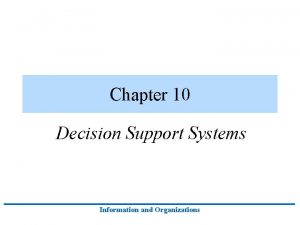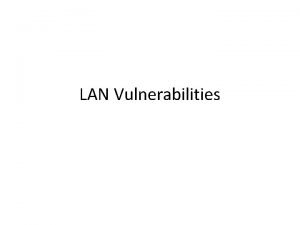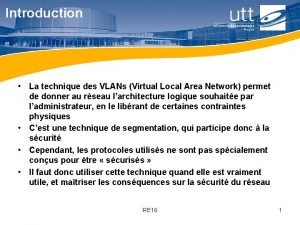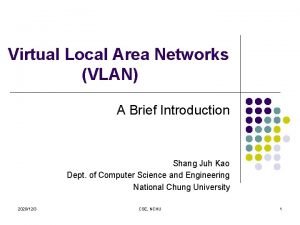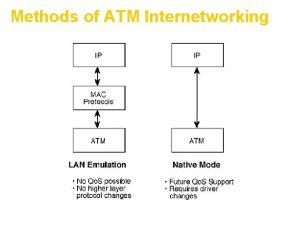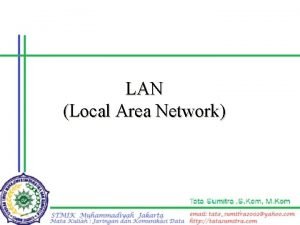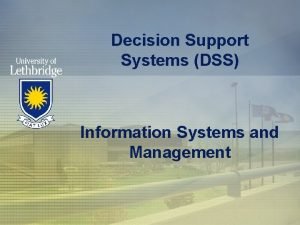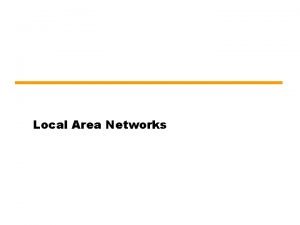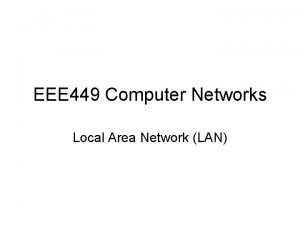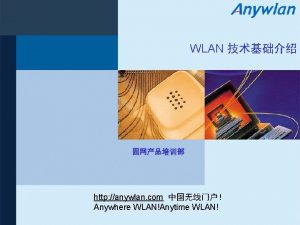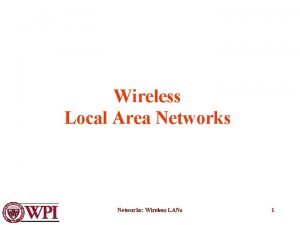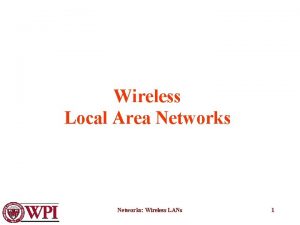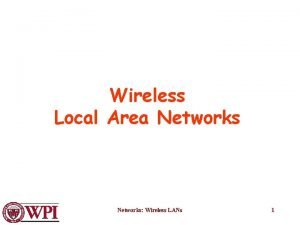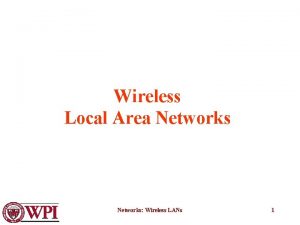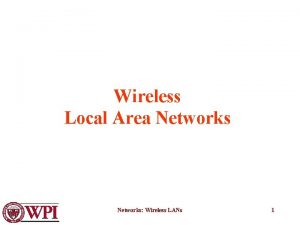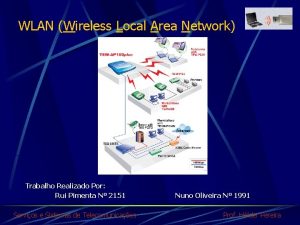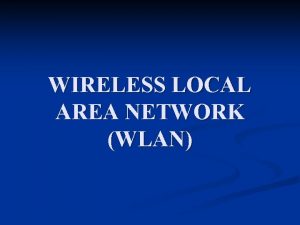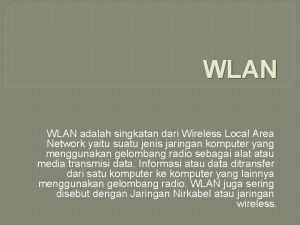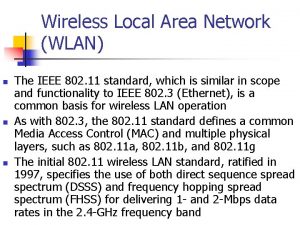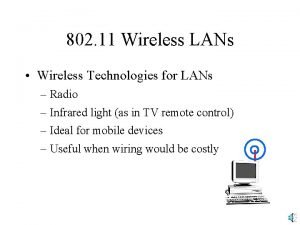Wireless LANs WLAN is wireless local area network




















- Slides: 20

Wireless LANs Ø WLAN is wireless local area network that Ø Ø use radio waves as its carrier (no physical cabling) Benefits include convenience, ease of installation and maintenance, flexibility WLAN standards define operations using different physical media: infrared and radio-frequency waves. The most common WLAN standard was defined in 1997 as IEEE 802. 11 There are numerous revisions/iterations of 802. 11 standard 1

802. 11 Standard 2

Wireless media Ø Radio-frequency transmissions (RF) q Uses low power signal (1 Watt) q Unlicensed bands not regulated by FCC (2. 4 or 5. 7 Ghz bands) Ø Infrared q Uses high frequency (just below visible light) signal q Directed (line-of-sight) or diffused signal 3

4

Spread Spectrum Ø It’s a technique where a narrowband signal is deliberately spread in a wider frequency band Ø Efficient use of bandwidth is sacrificed Ø Security and integrity of transmission are increased Ø Effects of EMI are minimized 5

Frequency Hopping Spread Spectrum r Narrowband signal 6

Direct Sequence Spread Spectrum r Chipping Code 7

Direct Sequence Spread Spectrum Wideband signal 8

Orthogonal Frequency Division Multiplexing r Multi-carrier signal r Many narrowband non-overlapping channels 9

Infrared 802. 11 IR r Defines 1 Mbps and 2 Mbps operation by bouncing light off ceilings and walls to provide connectivity within a room or small office. r Uses signal in the terahertz (very high) frequency range r Line-of-sight or diffused r Limited range r Higher security (limited to a room) r No RF interference r Lack of vendor conformity to the standard 10

802. 11 Media Access Control r Main functions defined include controlling media access in a shared network and security (encryption) of transmitted data r CSMA/CA is used to avoid collisions r Developed to overcome a “hidden node” problem 11

WLAN architecture r Peer-to-peer (adhoc) mode 12

WLAN Architecture r Infrastructure mode 13

WLAN architecture r Extended Service Set 14

802. 11 set of standards Wi-Fi specifications Specification Frequency Compatible Band with Speed 802. 11 b 11 Mb/s 2. 4 GHz b 802. 11 a 54 Mb/s 5 GHz a 802. 11 g 54 Mb/s 2. 4 GHz b, g 248 Mb/s 5 GHz and/or 2. 4 GHz b, g, n 802. 11 n (draft) 15

WLAN Security r Wireless transmissions are easy to intercept r WEP->WPA 2(802. 11 i) 16

Wired Equivalent Privacy (WEP) r Data encryption for confidentiality r Uses shared symmetric key (same key for encryption/decription) – easy to break r Uses static keys – hard to change, long-lived keys r Uses weak cryptographic algorithm 17

Wi-Fi Protected Access r Temporary measure to fix WEP vulnerabilities r Was based on developing 802. 11 i standard r Uses TKIP (Temporal Key Integrity Protocol) for dynamic key distribution r Uses longer keys and stronger encryption algorithm r Implements 802. 1 x authentication standard and EAP (Extensible Authentication Protocol) 18

Wi-Fi Protected Access (802. 1 x support) 19

WPA 2 (802. 11 i) r Ratified in 2004, integrated into 802. 11 i-2007 standard r Based on WPA r TKIP r 802. 1 X r CCMP – for data confidentiality and encryption 20
 What does a wireless lan (wlan) act as to a wired network?
What does a wireless lan (wlan) act as to a wired network? Lan type a
Lan type a Cwna guide to wireless lans 3rd edition
Cwna guide to wireless lans 3rd edition Cwna guide to wireless lans
Cwna guide to wireless lans Cwna guide to wireless lans
Cwna guide to wireless lans Lan backbone
Lan backbone Wlan meaning
Wlan meaning Wireless wide area networks
Wireless wide area networks Wireless wide area network
Wireless wide area network How to design a secure network
How to design a secure network Wide area network topology
Wide area network topology Local area network architecture
Local area network architecture Local area decision network
Local area decision network Lan vulnerabilities
Lan vulnerabilities Vlan (virtual local area network)
Vlan (virtual local area network) Introduction to vlan
Introduction to vlan Lan emulation
Lan emulation Karakteristik local area network
Karakteristik local area network Provide increasingly detailed data about a situation
Provide increasingly detailed data about a situation High speed lans
High speed lans Lan
Lan
